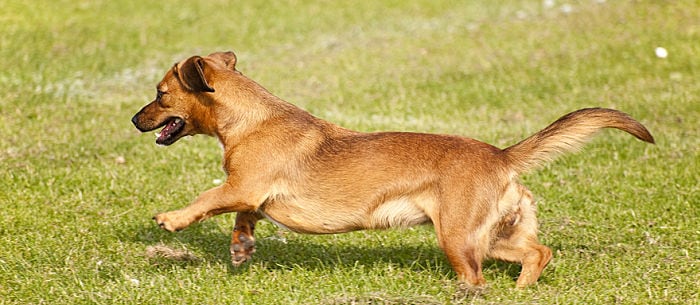Although dog nails are made of the same stuff as human nails, a dog broken nail actually requires more specialized care than a broken human nail. Dog nails don’t crack or break painlessly like human nails generally do, as dog nails are designed to just keep growing, according to Melissa Verplank, the founder and president of The Paragon School of Pet Grooming in Jenison, Michigan. But if the worst does occur and you do suspect a broken nail in your dog, there are some practical things you can do to take care of your pup.
Ways to Identify a Dog’s Broken Nail
A dog may yelp or bark when a nail is damaged, or you may not have any clear idea that it has happened. Pet owners should watch to see if their dog is favoring one paw over another, licking a paw more than normal or walking with a limp. Pet parents can also perform a visual inspection of the paw to check for blood or physical signs of trauma to the nail. According to Verplank, broken nails are more common in large, active dogs. In smaller dogs, she says, the nails typically just get very long or grow in a circle.
Can You Treat a Broken Nail at Home?
There are two types of broken nails you may need to treat, Verplank says. The first is one in which the nail is still attached but is very loose and dangling. Pet parents can attempt to remove this type of nail at home by using a quick pull motion. If bleeding occurs following the removal, pet parents can then use some gauze and light pressure to stop the bleeding. Mild bleeding is common in the first 24 hours following a toenail removal.
Preventing a Dog Broken Nail
Cracked and broken nails can be painful for your dog. They can also be costly to treat in some circumstances. But there are ways to prevent these injuries from occurring. The easiest way is to have your pup’s nails regularly trimmed by a groomer. You can also limit your pet’s activity on hard surfaces, such as sticking to grass instead of pavements when walking outdoors. Also, it’s a good idea to inspect your dog’s feet for small rocks or debris after taking walks. Regular baths are also a great way to not only keep nails clean but to quickly find nail damage.
For more information, read How to Clip Dog Nails — A Pain-Free and Easy Guide.
Amanda Kondolojy is a full-time freelancer with more than a decade of caregiving experience.
*This article is for general informational purposes only. It is not intended nor implied to be providing medical advice and is not a substitute for such advice. The reader should always consult a health care provider concerning any medical condition or treatment plan. Neither Care.com nor the author assumes any responsibility or liability with respect to use of any information contained herein.


